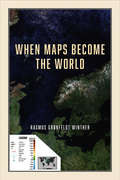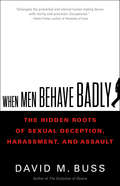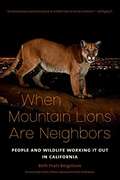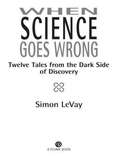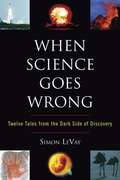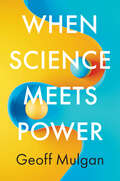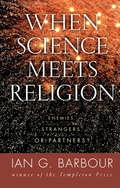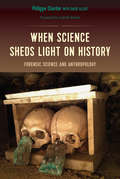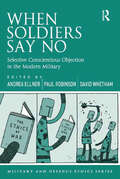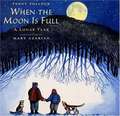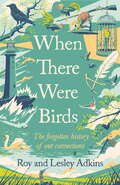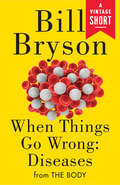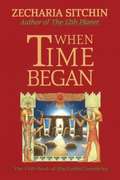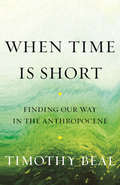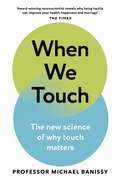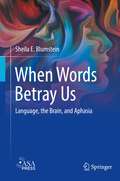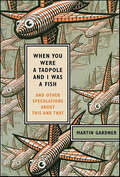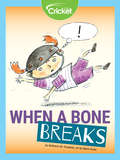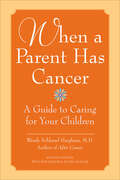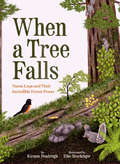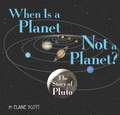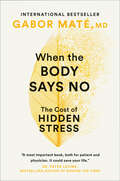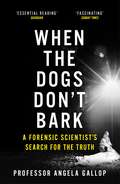- Table View
- List View
When Maps Become the World
by Rasmus Grønfeldt WintherMap making and, ultimately, map thinking is ubiquitous across literature, cosmology, mathematics, psychology, and genetics. We partition, summarize, organize, and clarify our world via spatialized representations. Our maps and, more generally, our representations seduce and persuade; they build and destroy. They are the ultimate record of empires and of our evolving comprehension of our world. This book is about the promises and perils of map thinking. Maps are purpose-driven abstractions, discarding detail to highlight only particular features of a territory. By preserving certain features at the expense of others, they can be used to reinforce a privileged position.When Maps Become the World shows us how the scientific theories, models, and concepts we use to intervene in the world function as maps, and explores the consequences of this, both good and bad. We increasingly understand the world around us in terms of models, to the extent that we often take the models for reality. Winther explains how in time, our historical representations in science, in cartography, and in our stories about ourselves replace individual memories and become dominant social narratives—they become reality, and they can remake the world.
When Men Behave Badly: The Hidden Roots of Sexual Deception, Harassment, and Assault
by David BussA leading evolutionary psychologist and sex researcher provides a unified new theory of sexual conflict and shows how its battles play out in the bar room, the bedroom, and the boardroom.Sexual conflict permeates ancient religions, from injunctions about thy neighbor's wife to the permissible rape of infidels. It is etched in written laws that dictate who can and cannot have sex with whom. Its manifestations shape our sexual morality, evoking approving accolades or contemptuous condemnation. It produces sexual double standards that flourish even in the most sexually egalitarian cultures on earth. And although every person alive struggles with sexual conflict, most of us see only the tip of the iceberg: dating deception, a politician's unsavory sexual grab, the slow crumbling of a once-happy marriage, a romantic breakup that turns nasty.When Men Behave Badly shows that this "battle of the sexes" is deeper and far more pervasive than anyone has recognized, revealing the hidden roots of sexual conflict—roots that originated over deep evolutionary time—which define the sexual psychology we currently carry around in our 3.5-pound brains. Providing novel insights into our minds and behaviors, When Men Behave Badly presents a unifying new theory of sexual conflict, and offers practical advice for men and women seeking to avoid it.
When Mountain Lions are Neighbors: People and Wildlife Working It Out in California
by Beth Pratt-BergstromWildness beats in the heart of California's urban areas. In Los Angeles, residents are rallying to build one of the largest wildlife crossings in the world because of the plight of one lonely mountain lion named P-22. Porpoises cavort in San Francisco Bay again because of a grassroots effort to clean up a waterway that was once a toxic mess. And on the Facebook campus in Silicon Valley, Mark Zuckerberg and his staff have provided a home for an endearing family of wild gray foxes. Through actions as sweeping as citizen science initiatives and as instantaneous as social media posts, a movement of diverse individuals and communities is taking action to recast nature as an integral part of our everyday lives. When Mountain Lions Are Neighbors explores this evolving dynamic between humans and animals, including remarkable stories like the journey of the wolf OR-7 and how Californians are welcoming wolves back to the state after a ninety-year absence, how park staff and millions of visitors rallied to keep Yosemite's famed bears wild, and many more tales from across the state. Written by Beth Pratt-Bergstrom of the National Wildlife Federation, these inspiring stories celebrate a new paradigm for wildlife conservation: coexistence.
When Science Goes Wrong
by Simon LevayNeuroscientist and author Simon LeVay brings together twelve of the most shocking stories of scientifi c failure in recent history. From forensic science and microbiology tonuclear physics and meteorology, these true tales of human error are often horrifying, sometimes amusing, and always entertaining: - A surprise hurricane makes a violent appearance onland despite repeated assurances that the hurricane doesn't exist - A team of scientists hike into the crater of what they think is a dormant volcano, ignoring signals of an imminent eruption- A patient who underwent cutting-edge brain surgery involving fetal transplants is found to have hair growing inside his brain When Science Goes Wrong is fascinating reading for anyone whose high school science project blew up at exactly the wrong time-and further confi rmation that you never want to hear a brain surgeon or a nuclear physicist say, "Oops!"
When Science Goes Wrong: Twelve Tales from the Dark Side of Discovery
by Simon LevayThe twelve true essays illustrates a variety of ways in which the scientific process can go wrong.
When Science Meets Power
by Geoff MulganScience and politics have collaborated throughout human history, and science is repeatedly invoked today in political debates, from pandemic management to climate change. But the relationship between the two is muddled and muddied. Leading policy analyst Geoff Mulgan here calls attention to the growing frictions caused by the expanding authority of science, which sometimes helps politics but often challenges it. He dissects the complex history of states’ use of science for conquest, glory and economic growth and shows the challenges of governing risk – from nuclear weapons to genetic modification, artificial intelligence to synthetic biology. He shows why the governance of science has become one of the biggest challenges of the twenty-first century, ever more prominent in daily politics and policy. Whereas science is ordered around what we know and what is, politics engages what we feel and what matters. How can we reconcile the two, so that crucial decisions are both well informed and legitimate? The book proposes new ways to organize democracy and government, both within nations and at a global scale, to better shape science and technology so that we can reap more of the benefits and fewer of the harms.
When Science Meets Religion: Enemies, Strangers, or Partners?
by Ian G. BarbourThe Definitive Introduction To The Relationship Between Religion And Science. In The Beginning: Why Did the Big Bang Occur? Quantum Physics: A Challenge to Our Assumptions About Reality? Darwin And Genesis: Is Evolution God's Way of Creating? Human Nature: Are We Determined by Our Genes? God And Nature: Can God Act in a Law-Bound World? Over the centuries and into the new millennium, scientists, theologians, and the general public have shared many questions about the implications of scientific discoveries for religious faith. Nuclear physicist and theologian Ian Barbour, winner of the 1999 Templeton Prize for Progress in Religion for his pioneering role in advancing the study of religion and science, presents a clear, contemporary introduction to the essential issues, ideas, and solutions in the relationship between religion and science. In simple, straightforward language, Barbour explores the fascinating topics that illuminate the critical encounter of the spiritual and quantitative dimensions of life.
When Science Sheds Light on History: Forensic Science and Anthropology
by Philippe Charlier"Well written and hard to put down. For anyone with an interest in forensic science, this book is a must-read."--Nigel McCrery, author of Silent Witnesses: The Often Gruesome but Always Fascinating History of Forensic Science "This compilation is a fascinating read for the nonspecialist and will further serve as an inspirational set of recommended readings for the next generation of forensic scientists."--Tim D. White, coauthor of The Human Bone Manual Did Richard the Lionheart really die from a simple crossbow wound, or was there foul play? Who are the two infants buried in Tutankhamun's tomb? Could a skull found in a tax collector's attic be the long-lost head of Henri IV? In When Science Sheds Light on History, Philippe Charlier, the "Indiana Jones of the graveyards," travels the globe to unravel these and other unsolved mysteries of human history. To get answers, Charlier looks for clues in medical records, fingerprints, and bloodstains. He reconstructs the face of Robespierre from masks molded from his body after death and analyzes charred bones to see if they really are Joan of Arc's. He discovers lethal levels of gold in the hair and bones of King Henry II's mistress Diane de Poitiers, who used gold salts to "preserve her eternal youth." Charlier also pieces together the stories of people whose names and lives have long been forgotten. He investigates Stone Age graves, medieval necropolises, and museum collections. Playing the role of both crime-scene investigator and forensic anthropologist, Charlier diagnoses a mummy with malaria, an ancient Greek child with Down syndrome, and a stately Roman with encephalitis. He also delves into ancient miracles and anomalies: a mute boy able to speak after making sacrifices to the gods, a woman pregnant for five years, and a serpent that cured a broken toe with its tongue. Exploring how our ancestors lived and how they died, the forty cases in this book seek to answer some of history's most enduring questions and illustrate the power of science to reveal the secrets of the past.
When Soldiers Say No: Selective Conscientious Objection in the Modern Military (Military and Defence Ethics)
by Paul Robinson David Whetham Andrea EllnerTraditionally few people challenged the distinction between absolute and selective conscientious objection by those being asked to carry out military duties. The former is an objection to fighting all wars - a position generally respected and accommodated by democratic states, while the latter is an objection to a specific war or conflict - theoretically and practically a much harder idea to accept and embrace for military institutions. However, a decade of conflict not clearly aligned to vital national interests combined with recent acts of selective conscientious objection by members of the military have led some to reappraise the situation and argue that selective conscientious objection ought to be legally recognised and permitted. Political, social and philosophical factors lie behind this new interest which together mean that the time is ripe for a fresh and thorough evaluation of the topic. This book brings together arguments for and against selective conscientious objection, as well as case studies examining how different countries deal with those who claim the status of selective conscientious objectors. As such, it sheds new light on a topic of increasing importance to those concerned with military ethics and public policy, within military institutions, government, and academia.
When The Moon Is Full: A Lunar Year
by Penny PollockThis lunar guide describes the folkloric names of twelve moons according to Native American tradition & showcases their defining characteristics in short verse & beautifully detailed hand-colored woodcuts.
When There Were Birds
by Lesley Adkins Roy AdkinsBirds are a joy and solace in troubled times, as well as a reminder of past experiences and a symbol of hope for the future. For centuries, they were also seen as a source of food, feathers and even fuel, and being so numerous, many were persecuted as pests. When There Were Birds is a social history of Britain that charts the complex connections between people and birds, set against a background of changes in the landscape and evolving tastes, beliefs and behaviour. Birds were once key elements of the nation's history, traditions and sports, and this gave rise to a rich legacy of literature, language and myths.No other group of animals has had such a complex and lengthy relationship with humankind. Birds have been kept in cages as pets, taught to speak and displayed as trophies. More practically, they have been used to tell the time, predict the weather, foretell marriages, provide unlikely cures for ailments, convey messages and warn of poisonous gases. Although very familiar, birds have often seemed strange, sinister and alarming. With their ability to fly, they bridged the gap between the earth and the heavens, and superstitions were rife because they were presumed to be linked to the supernatural. When There Were Birds draws together many disparate, forgotten strands to present a story that is an intriguing and unexpectedly significant part of our heritage.
When There Were Birds
by Lesley Adkins Roy Adkins'A marvellously original slice of social history' Daily MailBirds are a joy and solace in troubled times, as well as a reminder of past experiences and a symbol of hope for the future. For centuries, they were also seen as a source of food, feathers and even fuel, and being so numerous, many were persecuted as pests. When There Were Birds is a social history of Britain that charts the complex connections between people and birds, set against a background of changes in the landscape and evolving tastes, beliefs and behaviour. Birds were once key elements of the nation's history, traditions and sports, and this gave rise to a rich legacy of literature, language and myths.No other group of animals has had such a complex and lengthy relationship with humankind. Birds have been kept in cages as pets, taught to speak and displayed as trophies. More practically, they have been used to tell the time, predict the weather, foretell marriages, provide unlikely cures for ailments, convey messages and warn of poisonous gases. Although very familiar, birds have often seemed strange, sinister and alarming. With their ability to fly, they bridged the gap between the earth and the heavens, and superstitions were rife because they were presumed to be linked to the supernatural. When There Were Birds draws together many disparate, forgotten strands to present a story that is an intriguing and unexpectedly significant part of our heritage.
When There Were Birds
by Lesley Adkins Roy Adkins'A marvellously original slice of social history' Daily Mail (Book of the Week)'The facts and folklore of birdlife , and man's equivocal relationship with birds, are dissected in admirable detail in this handsome new book' Sunday TimesBirds are a joy and solace in troubled times, as well as a reminder of past experiences and a symbol of hope for the future. For centuries, they were also seen as a source of food, feathers and even fuel, and being so numerous, many were persecuted as pests. When There Were Birds is a social history of Britain that charts the complex connections between people and birds, set against a background of changes in the landscape and evolving tastes, beliefs and behaviour. Birds were once key elements of the nation's history, traditions and sports, and this gave rise to a rich legacy of literature, language and myths.No other group of animals has had such a complex and lengthy relationship with humankind. Birds have been kept in cages as pets, taught to speak and displayed as trophies. More practically, they have been used to tell the time, predict the weather, foretell marriages, provide unlikely cures for ailments, convey messages and warn of poisonous gases. Although very familiar, birds have often seemed strange, sinister and alarming. With their ability to fly, they bridged the gap between the earth and the heavens, and superstitions were rife because they were presumed to be linked to the supernatural. When There Were Birds draws together many disparate, forgotten strands to present a story that is an intriguing and unexpectedly significant part of our heritage.
When Things Go Wrong: from The Body
by Bill BrysonIn this selection from The Body, his compulsively readable and bestselling owner&’s manual to the human body, Bill Bryson introduces us to the mysterious, and often devastating, world of disease. Written with extraordinary insight and filled with remarkable facts, When Things Go Wrong deepens our understanding of the maladies that afflict us--what they are and how they work. A Vintage Short.
When Time Began (The Earth Chronicles #5)
by Zecharia SitchinWhen Time Began, the fifth book, explores ancient knowledge of Heaven and Earth and the interwoven cycles that gave rise to astronomy, the zodiac and astrology, and stone calendars such as Stonehenge, revealing the secret of New Ages past and future.
When Time Is Short: Finding Our Way in the Anthropocene
by Timothy BealWith faith, hope, and compassion, acclaimed religion scholar Timothy Beal shows us how to navigate the inevitabilities of the climate crisis and the very real—and very near—possibility of human extinctionWhat if it&’s too late to save ourselves from climate crisis? When Time is Short is a meditation for what may be a finite human future that asks how we got here to help us imagine a different relationship to the natural world.Modern capitalism, as it emerged, drew heavily upon the Christian belief in human exceptionalism and dominion over the planet, and these ideas still undergird our largely secular society. They justified the pillaging and eradication of indigenous communities and plundering the Earth&’s resources in pursuit of capital and lands.But these aren&’t the only models available to us—and they aren&’t even the only models to be found in biblical tradition. Beal re-reads key texts to anchor us in other ways of being—in humbler conceptions of humans as earth creatures, bound in ecological interdependence with the world, subjected to its larger reality. Acknowledging that any real hope must first face and grieve the realities of climate crisis, Beal makes space for us to imagine new possibilities and rediscover ancient ones. What matters most when time becomes short, he reminds us, is always what matters most.
When We Touch: Handshakes, hugs, high fives and the new science behind why touch matters
by Professor Michael Banissy'A mind-expanding tour of what touch means.' DAVID EAGLEMAN, neuroscientist and author of Incognito and LivewiredWhy is a hugged person a healthier person?Why do high-fiving teams win more matches?How does a shared handshake make you more likely to tell the truth?We rely on touch every day of our lives. It makes us who we are. It helps us connect with those around us. And yet touch between individuals can be fraught with confusion and misunderstanding.In When We Touch, social neuroscientist Professor Michael Banissy blends expert scientific insights with anecdotes from 90s rom coms to office politics to explore the new science of human touch. His groundbreaking new book explains how touch impacts every part of our lives, from why touch is essential for healthy development, to how kissing might help us choose a genetically beneficial mate to how holding hands with a loved one can help us feel less pain.Banissy tackles the nuances of appropriate touch across culture and gender, investigates our 'touch personas' and why they differ, and offers solutions to the 'touch hunger' that has become a modern epidemic in our increasingly distanced world.From the most inconsequential to the most salient moments of human contact, When We Touch is a fascinating and entertaining exploration of our most overlooked sense.
When Words Betray Us: Language, the Brain, and Aphasia
by Sheila E. BlumsteinThis book presents a journey into how language is put together for speaking and understanding and how it can come apart when there is injury to the brain. The goal is to provide a window into language and the brain through the lens of aphasia, a speech and language disorder resulting from brain injury in adults. This book answers the question of how the brain analyzes the pieces of language, its sounds, words, meaning, and ultimately puts them together into a unitary whole. While its major focus is on clinical, experimental, and theoretical approaches to language deficits in aphasia, it integrates this work with recent technological advances in neuroimaging to provide a state-of-the-art portrayal of language and brain function. It also shows how current computational models that share properties with those of neurons allow for a common framework to explain how the brain processes language and its parts and how it breaks down according to these principles. Consideration will also be given to whether language can recover after brain injury or when areas of the brain recruited for speaking, understanding, or reading are deprived of input, as seen with people who are deaf or blind. No prior knowledge of linguistics, psychology, computer science, or neuroscience is assumed. The informal style of this book makes it accessible to anyone with an interest in the complexity and beauty of language and who wants to understand how it is put together, how it comes apart, and how language maps on to the brain.
When You Were a Tadpole and I Was a Fish: And Other Speculations About This and That
by Martin Gardner“Martin Gardner is indispensable. Here’s the perfect introduction to the range of his obsessions—from Ann Coulter to The Wizard of Oz.” —William Poundstone, bestselling author of Are You Smart Enough to Work at Google?Best known as the longtime writer of the Mathematical Games column for Scientific American—which introduced generations of readers to the joys of recreational mathematics—Martin Gardner has for decades pursued a parallel career as a devastatingly effective debunker of what he once famously dubbed “fads and fallacies in the name of science.” It is mainly in this latter role that he is onstage in this collection of choice essays.When You Were a Tadpole and I Was a Fish takes aim at a gallery of amusing targets, ranging from Ann Coulter's qualifications as an evolutionary biologist to the logical fallacies of precognition and extrasensory perception, from Santa Claus to The Wizard of Oz, from mutilated chessboards to the little-known “one-poem poet” Langdon Smith (the original author of this volume's title line). The writings assembled here fall naturally into seven broad categories: Science, Bogus Science, Mathematics, Logic, Literature, Religion and Philosophy, and Politics. Under each heading, Gardner displays an awesome level of erudition combined with a wicked sense of humor.“When you figure out the answer [to one of Gardner’s puzzles], you know you’ve found something that is indisputably true anywhere, anytime. For a brief moment, the universe makes perfect sense.” —John Tierney, The New York Times“Smart, witty essays on science and culture.” —Carolyn Kellogg, Los Angeles Times“A more than worthwhile introduction to one of the most underappreciated polymaths of the last fifty years.” —Christopher Vola, The Brooklyn Rail
When a Bone Breaks
by Kathiann M. KowalskiDid you know if you break a bone, the bone can repair itself? You'll need to visit the doctor to have your broken bone set in a cast, while your body is hard at work repairing the injury! The moment you fall, blood from your injury sends signals to cells to start building new bone–the process of repairing is on its way! Do you know what your body makes to create new bone?
When a Parent Has Cancer: A Guide to Caring for Your Children
by Wendy Schlessel HarphamAt some point in our lives, many of us will face the crisis of an unexpected illness. For parents, the fear, anxiety and confusion resulting from a cancer diagnosis can be particularly devastating. When A Parent Has Cancer is a book for families written from the heart of experience. A mother, physician, and cancer survivor, Dr Wendy Harpham offers clear, direct, and sympathetic advice for parents challenged with the task of raising normal, healthy children while they struggle with a potentially life–threatening disease. Dr Harpham lays the groundwork of her book with specific plans for helping children through the upheaval of a parent's diagnosis and treatment, remission and recovery, and if necessary, confronting the possibility of death. She emphasises the importance of being honest with children about the gravity of the illness, while assuring them that their basic needs will always be met. Included is Becky and the Worry Cup, an illustrated children's book that tells the story of a seven–year–old girl's experiences with her mother's cancer.
When a Tree Falls: Nurse Logs and Their Incredible Forest Power
by Kirsten PendreighThe perfect read for exploring nature with children, this beautiful nonfiction picture book offers an awe-inspiring look at the forest’s life cycle.A tree suns and sways in the forest. She is a place to grow, to rest, and to shelter. But what happens when a tree falls? The answer will make your heart soar.In this lyrical picture book, explore how the extraordinary nurse log provides a nutrient-rich space for new seedlings, shelters small animals, hosts different plant species, and, most profoundly, nurtures a new tree in the process, renewing the cycle of life. Young readers will be amazed by the nurse log’s resilience and its powerful connection to the forest’s past, present, and future.BOOK ABOUT TREES & MUCH MORE: Every organism in the forest ecosystem is connected. This fascinating picture book powerfully illustrates how the end of one life in the forest can be the beginning of another.FOR LOVERS OF NATURE: When a Tree Falls is a reminder of the wondrous ecosystems in our own backyards and the wild forest beauty we may discover by looking closely. It is ideal for families who enjoy being in nature. LUSH ILLUSTRATIONS: The forest life is rendered with such richness and detail that it invites readers to immerse themselves in the endlessly inspiring natural world.GORGEOUS GIFT: An excellent choice for a classroom book or as a gift for kids who love trees, spending time outdoors, and are mindful of environmental issues.Perfect for:Kids who are interested in trees and forestsParents and grandparents of children who want to learn more about trees and forestsTeachers, educators, and librarians seeking beautiful nonfiction books with STEM contentGift-givers looking for a distinctive present for an animal- or nature-loving childAnyone seeking a picture book that promotes environmental awarenessReaders of Because of an Acorn, Over and Under the Rainforest, and Wake Up, Woodlands
When is a Planet Not a Planet?: The Story of Pluto
by Elaine ScottSpace and planets are topics of endless fascination to kids and part of every grade-school curriculum. Yet because of the history-making reassignment of Pluto from "planet" to "dwarf planet" on August 24, 2006, all books on the solar system are now out of date. Enter When is a Planet Not a Planet? The Story of Pluto by Elaine Scott, an esteemed writer of non-fiction for children. Scott is the first to put the answer to the title question into terms simple enough for a very young audience to understand, based upon the new definitions determined by the International Astronomical Union. Well-researched and accompanied by large, awe-inspiring photographs and paintings, this exciting new book makes clear what astronomers have argued about for decades. Image descriptions present.
When the Body Says No: The Cost of Hidden Stress
by Gabor MateIn this accessible and groundbreaking book -- filled with the moving stories of real people -- medical doctor and bestselling author of Scattered Minds, Gabor Maté, shows that emotion and psychological stress play a powerful role in the onset of chronic illness. Western medicine achieves spectacular triumphs when dealing with acute conditions such as fractured bones or life-threatening infections. It is less successful against ailments not susceptible to the quick ministrations of scalpel, antibiotic or miracle drug. Trained to consider mind and body separately, physicians are often helpless in arresting the advance of most of the chronic diseases, such as breast cancer, rheumatoid arthritis, Crohn's disease, multiple sclerosis, fibromyalgia, and even Alzheimer's disease. Gabor Maté has found that in all of these chronic conditions, there is a common thread: people afflicted by these diseases have led lives of excessive stress, often invisible to the individuals themselves. From an early age, many of us develop a psychological coping style that keeps us out of touch with the signs of stress. So-called negative emotions, particularly anger, are suppressed. Dr. Maté writes with great conviction that knowledge of how stress and disease are connected is essential to prevent illness in the first place, or to facilitate healing. <p><p> When the Body Says No is an impressive contribution to current research on the physiological connection between life's stresses and emotions and the body systems governing nerves, immune apparatus and hormones. With great compassion and erudition, Gabor Maté demystifies medical science and, as he did in Scattered Minds, invites us all to be our own health advocates.
When the Dogs Don't Bark: A Forensic Scientist's Search for the Truth
by Professor Angela Gallop*As seen on ITV's The Pembrokeshire Murders*'Fascinating. A book that will be essential reading for every aspiring crime writer' Guardian'Offers a chilling glimpse into her life's work. Fascinating stuff.' Sunday Times 'Compelling' Daily Mirrror__________By the time I arrived at the wood yard in Huddersfield on a bitterly cold night in February 1978, the body of the 18-year-old victim had already been taken to the mortuary.__________Never before has criminal justice rested so heavily on scientific evidence. With ever-more sophisticated and powerful techniques at their disposal, forensic scientists have an unprecedented ability to help solve even the most complex cases. Angela Gallop has been a forensic scientist for over 40 years. After joining the Forensic Science Service, the first crime scene she attended was for a case involving the Yorkshire Ripper. As well as working on a wide range of cases in many countries around the world, she is now the most sought-after forensic scientist in the UK, where she has helped solve numerous high-profile cases, including the investigation that finally absolved the Cardiff Three the Pembrokeshire Coastal Path murders, and the killings of Stephen Lawrence, Damilola Taylor, Rachel Nickell and Roberto Calvi. From the crime scene to the courtroom, When the Dogs Don't Bark is the remarkable story of a life spent searching for the truth.'Fascinating' The Sun'a casebook that reads like The Encyclopedia Of Murder' Daily Express'One of the profession's leading lights' Woman & Home'The real life Silent Witness' Belfast Telegraph__________The compelling memoir from the UK's most eminent forensic scientist and some of the most fascinating criminal investigations she has worked on. You learnt about forensic pathology with Dr Richard Shepherd in Unnatural Causes and about anthropology with Professor Sue Black in All That Remains. Now it's time to learn about the scene of the crime. . .
